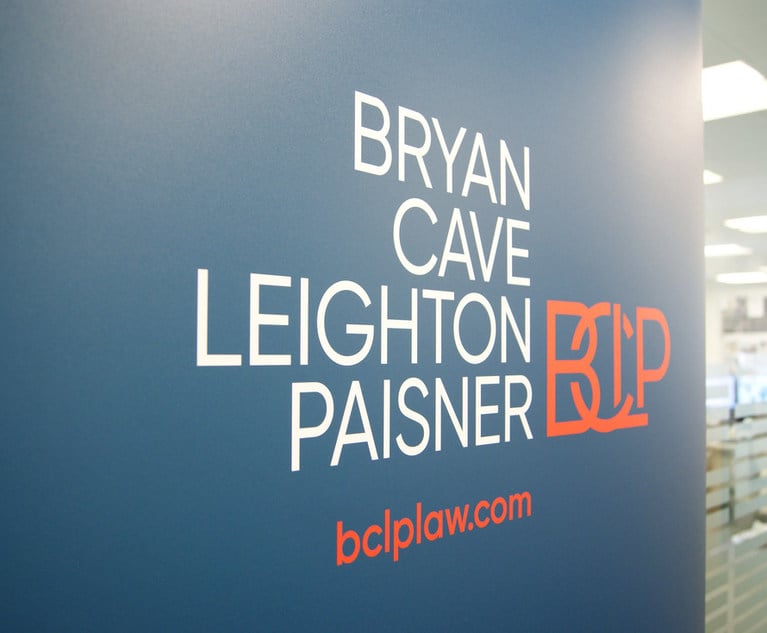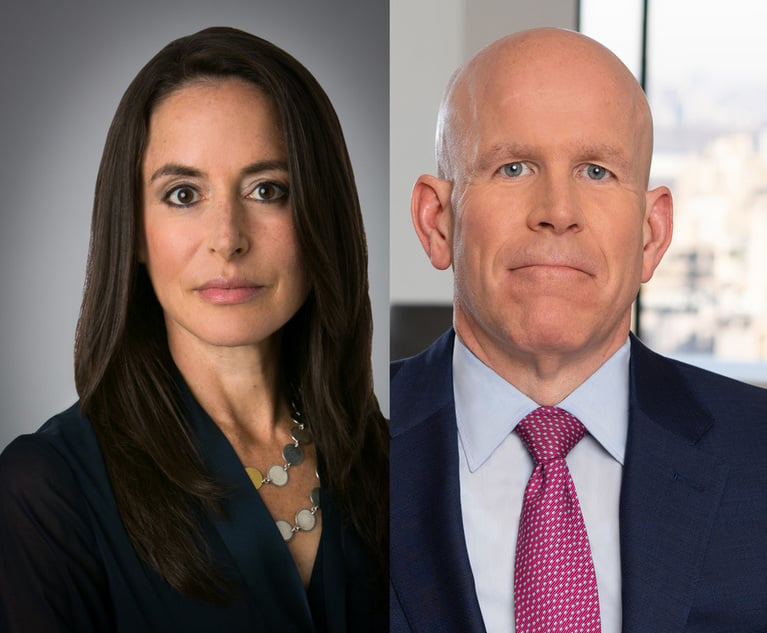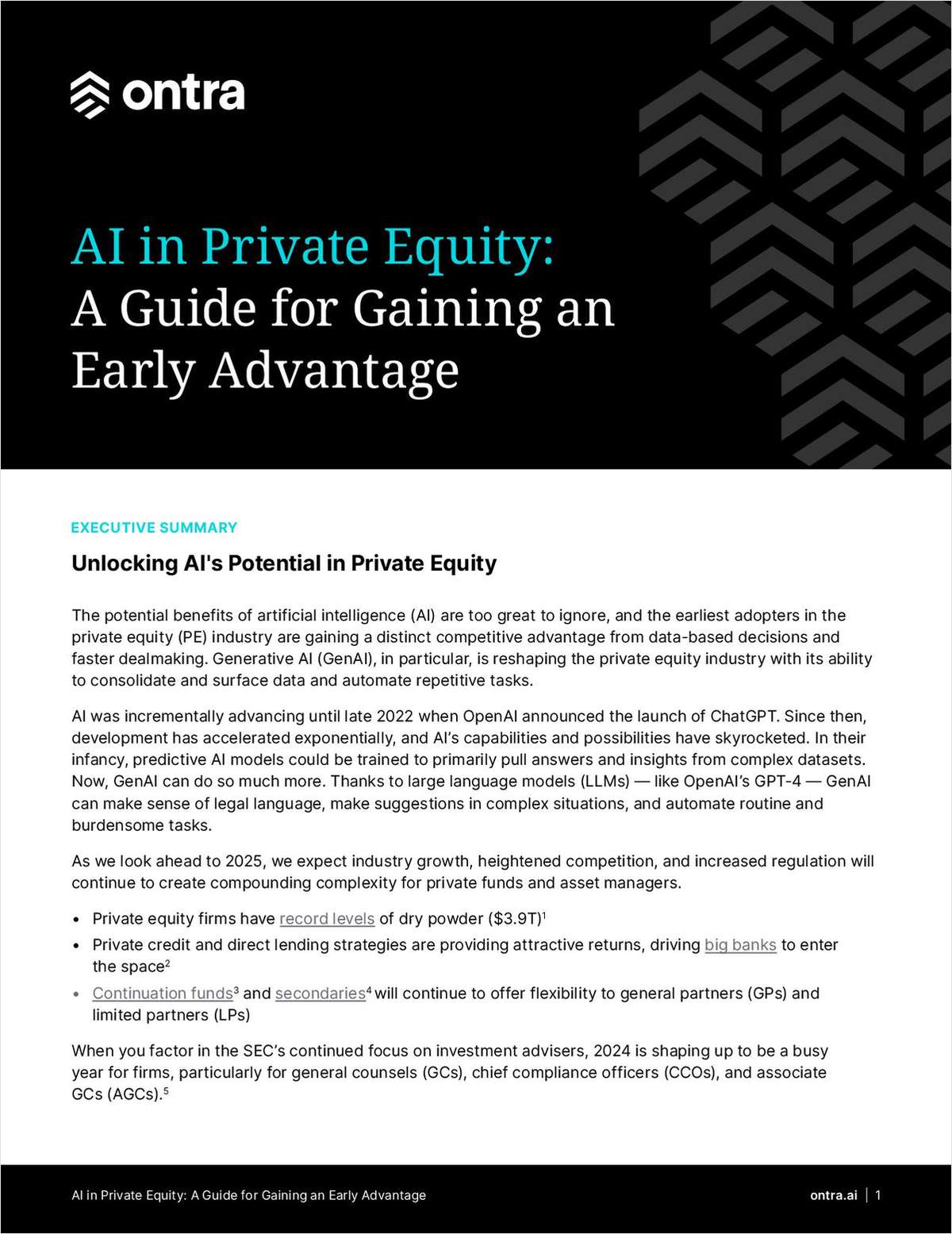The billion-dollar bash – how post-crisis investigation work is changing the way law firms advise banks
By any standards, $23bn is a lot of money. It's a bit more than the gross domestic product of Uganda, Cyprus or Estonia.
April 10, 2014 at 07:25 PM
15 minute read
With banks setting aside eye-watering sums of money to meet liabilities generated by the fallout from the financial crash, in-house legal departments and law firms are having to rethink their business models. Alex Newman reports
By any standards, $23bn is a lot of money. It's a bit more than the gross domestic product of Uganda, Cyprus or Estonia. Closer to home, it's enough to buy either BskyB or Centrica outright, or by another measure, the UK Government's annual spend on industry, agriculture and employment.
Twenty three billion dollars (£13.7bn) is also the amount JPMorgan Chase announced it had set aside for litigation costs last October. The staggering admission, made just a few weeks prior to a $13bn (£7.8bn) securities settlement with US regulators, was widely viewed as a new nadir for major banks in the continuing legal fallout from the financial crisis.
In some respects, the sheer size of JPMorgan's legal costs makes the bank something of an exception. When settling with the bank, regulators will have accounted for strong underlying earnings in full knowledge that the penalties would not destroy the enormous corporate.
But the ballooning of the litigation war chest at JPMorgan – by one yardstick at the time, 12% of the bank's market capitalisation – is indicative of the moves by financial institutions as a whole in the last year. The lion's share of major banks on both sides of the Atlantic have increased their legal provisions in anticipation of continued regulatory penalties and associated spend on lawyers. For several, legal costs have been singled out as the main contributor to a fall in profits or spiralling losses.
And as the product redress claims continue, so too do the mammoth multi-jurisdictional investigations into product mis-selling and the banks' alleged manipulation of Libor and foreign exchange rates.
In 2013, Barclays more than doubled its legal provisions to £485m. Ahead of the publication of its annual report, the Royal Bank of Scotland (RBS) confirmed in January that it was setting aside £1.9bn to cover various claims and conduct-related matters, as well as an additional £965m to settle further payment protection insurance (PPI) and interest rate hedging product claims. It also confirmed a further £200m of additional provisions for unnamed legal and conduct-related expenses. Lloyds Bank set aside £2.8bn relating to PPI, and £1bn to cover other regulatory provisions. Credit Suisse's and HSBC's legal spends also increased last year. Thomson Reuters estimates banks in the FTSE 100 set aside a combined £9.22bn in provisions in 2013, a year-on-year increase of 44%.
That banks' in-house legal teams face huge cost pressures is, of course, a trite observation. But as these expenses have risen to the top of board and shareholder agendas, so too have the pressures on general counsel and their advisers to deliver results as cheaply as possible.
"This is serious existential stuff for the institutions and they have to deal with it properly," says Damien Byrne Hill, Herbert Smith Freehills' (HSF) head of banking litigation in London. "But at the same time, there is an increased pressure on cost and the two lines in the graph are colliding."
How this dynamic is playing out in the legal market depends on who you speak to. It will not have escaped the attention of law firms – particularly those that might be seen in the 'challenger' bracket of financial institution litigators – that banks are spending more on legal fees, and that there is more work to go round than ever before. Equally, in-house counsel are facing ever-greater pressure to ensure they are leveraging their advisers as inexpensively as possible in order to minimise the sort of eye-watering sums paid out by JPMorgan and its peers.
State of play
If you look at the dockets of Libor or forex class action suits in New York, you will notice a cadre of high pedigree litigation names keeps on recurring, often for the same bank. Next to defendant UBS you will see Gibson Dunn & Crutcher; next to defendant Barclays you will see Sullivan & Cromwell, Boies Schiller & Flexner or Clifford Chance (CC).
You might be forgiven then for assuming banks reach for the firms with the most esteemed reputations when faced with major regulatory investigations and litigation. However, the picture from the front line is a bit more complex, partly because the publicly disclosed counsel might represent just one side of the coin.
"[The banks] need firms which can cover a number of jurisdictions on the twin regulatory and litigation fronts," says Freshfields Bruckhaus Deringer banking litigation head Andrew Hart. "In the UK, the magic circle and firms which have credible offerings in a number of jurisdictions have advantages for global investigations and litigation work."
Others argue that smaller firms are more than equipped to handle substantial amounts of high-profile litigation and regulatory work.
"Most of the UK banks recognise that they have defaulted to the magic circle for too long," argues Pinsent Masons head of banking litigation Michael Isaacs. "That might not feel too painful when you're the world's biggest bank making substantial profits in investment banking but following capital challenges, divestments and a refocusing on retail and corporate banking markets by many, they have recognised the need to wean the business away from high-cost firms.

Face of the financial scandal: former Barclays chief executive Bob Diamond after giving evidence to the Treasury Select Committee
"There's a recognition that you don't always need the gold plate, and you can use firms that are just as good for what is needed, without compromising quality, and thus get better value. There have been some winners and losers in that process, of course."
The idea these businesses have suddenly realised they need to wean themselves off high-cost firms will seem a little far-fetched to many. The relationships between the largest banks and 'gold plate' law firms are undoubtedly powerful and institutional, but among those senior lawyers who spoke to Legal Week for this feature there was little consensus that financial institutions were ever addicted to using top name firms for litigation.
"I don't agree with the view that the IBM factor applies in these cases," says one in-house banking lawyer who has instructed firms in both Libor and forex matters. "It's not reputation or prestige that governs the selection of firms, it's all about ability and depth of resource and – when you're about to get involved in a huge, lengthy piece of work – choosing lawyers that you genuinely get on with."
The banks' default position now is to be involved in multiple investigations and strands of litigation. Because of this, the prestige of the lawyers for their defence is not the central issue for shareholders, regulators, opponents or indeed in-house counsel. What is in contention – and indeed the burning question for bank GCs above all else – is how much all of this is costing.
Costs
"I often get told by law firms that their headline rates are £700 an hour," one senior litigation lawyer at a UK bank remarks. "It's a bit like shopping in Allied Carpets or TM Lewin though; everyone knows you never pay full price, and the rates that firms command are really on permanent reduction for all work."
Long the source of banking partners' gripes at panel review time, heavy fee reductions are a fixture of the way financial institutions manage their relationships with external advisers. It is a buyers' market, so in fairness to the banks' in-house teams, why should they pursue anything but large rate reductions? The short answer is that this might not actually be the most effective way of bringing down costs.
"The reductions can now be significantly more than 30% off standard rates, and there is significant pressure to agree even deeper discounts," suggests Stephenson Harwood banking litigation partner Sue Millar, who says the focus on the hourly rate still trumps an exploration of alternative pricing methods. "It still seems to be about hammering down the lowest rate. The banks say they want innovative pricing structures, but the biggest response from in-house counsel is 'what is the lowest rate?'."
Not everyone agrees. "Rates have stagnated for a while," says HSF's Byrne Hill, who goes as far as to contend they are being "re-evaluated up". Specific financial institution clients and the precise nature of the work being done will of course have an impact on the observable trends from partner to partner and firm to firm. What is true is that fee agreements are now taking into account calls for greater efficiency, which for major investigations work has led to or reinforced a number of developments.
Banks and their advisers are now using several models – often in tandem – to improve the efficiency of costly litigation work. Outsourcing – or what RBS refers to as "deconsolidation" according to one adviser to the bank – is one way financial institutions manage this. A good example was seen in RBS' instruction of CC to lead an independent review of the bank's lending practices, following the publication of the Tomlinson Report into banks' lending practices last November. To bring down costs, CC regulatory partners Carlos Conceicao and Kelwin Nicholls – who are responsible for the review and its co-ordination – referred on volume work to lawyers at TLT Solicitors and DMH Stallard which bill at far cheaper rates. The arrangement has allowed the bank to save more than half its initial budget for the investigation, according to one well-placed source.
Another model, which is particularly common in US litigation or regulatory work, is for banks to instruct several firms at the same time to carry out different strands of work, sometimes adding a competitive element between the firms to win further strands. A litigator at a high-end US litigation team told Legal Week he assumed his instruction by a UK bank was being used to strong-arm the lender's magic circle advisers to bring down their rates.
Financial services litigation and contentious regulatory work is also increasingly being supported by – and driving demand for – insourcing. HSF financial services regulatory partner Jenny Stainsby – who says she has "on occasion" been asked to consider partnering with other firms – sees the firm's own document management and review centre in Belfast as a more attractive proposition than referring elements of a job onto smaller firms.
"Belfast gives you two things," she says. "A lower hourly rate for the people doing the work, and a formalised process which allows you to do things more effectively and efficiently, all of which translates to saving the client money; a lot of the increased client demand for services from our Belfast office is being driven by financial services work."
Similarly, Simmons & Simmons' London investigations team sends a lot of work to its Bristol office.
Banks also use law firms' contract lawyer services and legal process outsourcing companies for routine or volume regulatory matters. "In the context of interest rate hedging products, we've seen major banks use flexible contracted legal support from legal process outsourcers to help with peaks of review work," says Isaacs of Pinsent Masons, who includes his own firm's flexi-working Vario business in the list of advisers on such hedging products. "Some have also had to rely on more traditional secondee support from their panel firms."
Elsewhere, law firms and their flexible business arms may be overlooked entirely. "For those types of investigations on the routine side, where there are lots and lots of small claims, I know that at least one bank has used the junior bar to come in and lead reviews," says Stephenson Harwood's Millar, who includes advisory work on the mis-selling of PPI in that bracket. "If you can get a baby barrister for a very competitive rate, it probably makes sense if you can sub-contract work there, rather than use a law firm."
"What is crucial for the client is the guarantee of quality," cautions Byrne Hill. "These matters are really significant and there is always a risk that if you're outsourcing work outside a firm, it can lose its stamp of quality."
New models
For Freshfields' Hart, banks' legal tribulations in the last few years highlight the requirement for efficiency, rather than acting as a driver for new working relationships between law firms and banks. "I'm not sure that recent increases in legal spend have resulted in anything different to what the banks have been doing for some years in terms of demanding efficiency," he argues.
But according to others in the market, this may not be the full picture, with a number of banking litigators expecting shrinking legal panels to result in sole-provider models.
"Certain banks are looking at a one-stop-shop, where either a magic circle or US firm would provide the entire global investigatory resource," says one financial services regulatory partner. "The risks are that this might give rise to increased conflicts, and even now, there aren't many firms that could provide this. But if you are a law firm with Libor or a foreign exchange issue on your hands, you're looking at potentially huge parallel or rolling investigations."
One potential advantage of the one-stop shop model would be one central point of contact, though sources highlighted the difficulties for one firm to balance and co-ordinate English and US law specialisms, as well as the dearth of firms that have deep litigation benches on both sides of the Atlantic.
This said, there are already examples of global investigatory responses going through one firm. King & Wood Mallesons SJ Berwin, the main adviser to RBS on its €391m (£325m) Euribor settlement with the European Commission last December, has also helped co-ordinate the bank's Libor settlements with all global regulators.
For one firm to be deployed consistently for all global investigations work would be an enormous challenge. The foreign exchange scandal – which has already drawn responses from US, UK, Hong Kong, European and Swiss authorities – highlights how global issues often have multiple centres of regulatory gravity. But in the battle to get closest to the banks, law firms will certainly be exploring solutions to these issues.
Shape
As banks get better at navigating the contentious regulatory nebula, it is not just their law firm relationships that will shift, but their shape.
"The word from at least one UK bank is they've been given a mandate to expand their compliance team, but not their litigation team," says Millar. "So there will be more lawyers within compliance, but not many more in the actual legal team."
For HSF's Stainsby, where financial institutions have invested in in-house legal personnel, the trend has been to create "slightly more senior teams when it comes to litigation so they can take control of mandates". Demand for secondees, however, continues apace, while several larger banks have cut costs by bringing employment matters in house.
How this is changing the shape of law firms is well documented. All bank litigators will now be much more familiar with contentious regulatory work, and will have broadened their practices to account for changes in clients' caseloads and demand.
For Simmons' financial litigation head, Rob Turner, a number of law firm banking practices are looking to do as his firm did and bring in specialist white collar teams. "That team [including former Kingsley Napley partner Stephen Gentle] has very quickly become integral," he says, pointing to "competition, data protection and employment specialists to offer the type of comprehensive investigations product that five years ago did not exist".
Regulators and litigants are finding their feet in their dealings with the banks. This has resulted in enormous cost to financial institutions, and a renewed drive by boards and GCs to ensure legal spend does not push balance sheets into the red. But as the geographical and technical complexities of global investigations widen, so too will the banks' experience of handling them.
Managing these costs is partly about dissipating the pressure and partly about passing it on. When this pressure is transferred to law firms, the winners will be those firms that balance the requirements to specialise, beat the market rate, provide innovative staffing solutions, and in the case of potentially lucrative investigations work, think and co-ordinate globally. They must do all this and generate a profit from the relationship.
This needn't be a curse. But it is looking more and more like a high-wire act.
This content has been archived. It is available through our partners, LexisNexis® and Bloomberg Law.
To view this content, please continue to their sites.
Not a Lexis Subscriber?
Subscribe Now
Not a Bloomberg Law Subscriber?
Subscribe Now
NOT FOR REPRINT
© 2024 ALM Global, LLC, All Rights Reserved. Request academic re-use from www.copyright.com. All other uses, submit a request to [email protected]. For more information visit Asset & Logo Licensing.
You Might Like
View All
Trump and Latin America: Lawyers Brace for Hard-Line Approach to Region

BCLP Mulls Merger Prospects as Profitability Lags, Partnership Shrinks

Trending Stories
- 1Judicial Ethics Opinion 24-68
- 2Friday Newspaper
- 3Judge Denies Sean Combs Third Bail Bid, Citing Community Safety
- 4Republican FTC Commissioner: 'The Time for Rulemaking by the Biden-Harris FTC Is Over'
- 5NY Appellate Panel Cites Student's Disciplinary History While Sending Negligence Claim Against School District to Trial
Who Got The Work
Michael G. Bongiorno, Andrew Scott Dulberg and Elizabeth E. Driscoll from Wilmer Cutler Pickering Hale and Dorr have stepped in to represent Symbotic Inc., an A.I.-enabled technology platform that focuses on increasing supply chain efficiency, and other defendants in a pending shareholder derivative lawsuit. The case, filed Oct. 2 in Massachusetts District Court by the Brown Law Firm on behalf of Stephen Austen, accuses certain officers and directors of misleading investors in regard to Symbotic's potential for margin growth by failing to disclose that the company was not equipped to timely deploy its systems or manage expenses through project delays. The case, assigned to U.S. District Judge Nathaniel M. Gorton, is 1:24-cv-12522, Austen v. Cohen et al.
Who Got The Work
Edmund Polubinski and Marie Killmond of Davis Polk & Wardwell have entered appearances for data platform software development company MongoDB and other defendants in a pending shareholder derivative lawsuit. The action, filed Oct. 7 in New York Southern District Court by the Brown Law Firm, accuses the company's directors and/or officers of falsely expressing confidence in the company’s restructuring of its sales incentive plan and downplaying the severity of decreases in its upfront commitments. The case is 1:24-cv-07594, Roy v. Ittycheria et al.
Who Got The Work
Amy O. Bruchs and Kurt F. Ellison of Michael Best & Friedrich have entered appearances for Epic Systems Corp. in a pending employment discrimination lawsuit. The suit was filed Sept. 7 in Wisconsin Western District Court by Levine Eisberner LLC and Siri & Glimstad on behalf of a project manager who claims that he was wrongfully terminated after applying for a religious exemption to the defendant's COVID-19 vaccine mandate. The case, assigned to U.S. Magistrate Judge Anita Marie Boor, is 3:24-cv-00630, Secker, Nathan v. Epic Systems Corporation.
Who Got The Work
David X. Sullivan, Thomas J. Finn and Gregory A. Hall from McCarter & English have entered appearances for Sunrun Installation Services in a pending civil rights lawsuit. The complaint was filed Sept. 4 in Connecticut District Court by attorney Robert M. Berke on behalf of former employee George Edward Steins, who was arrested and charged with employing an unregistered home improvement salesperson. The complaint alleges that had Sunrun informed the Connecticut Department of Consumer Protection that the plaintiff's employment had ended in 2017 and that he no longer held Sunrun's home improvement contractor license, he would not have been hit with charges, which were dismissed in May 2024. The case, assigned to U.S. District Judge Jeffrey A. Meyer, is 3:24-cv-01423, Steins v. Sunrun, Inc. et al.
Who Got The Work
Greenberg Traurig shareholder Joshua L. Raskin has entered an appearance for boohoo.com UK Ltd. in a pending patent infringement lawsuit. The suit, filed Sept. 3 in Texas Eastern District Court by Rozier Hardt McDonough on behalf of Alto Dynamics, asserts five patents related to an online shopping platform. The case, assigned to U.S. District Judge Rodney Gilstrap, is 2:24-cv-00719, Alto Dynamics, LLC v. boohoo.com UK Limited.
Featured Firms
Law Offices of Gary Martin Hays & Associates, P.C.
(470) 294-1674
Law Offices of Mark E. Salomone
(857) 444-6468
Smith & Hassler
(713) 739-1250










